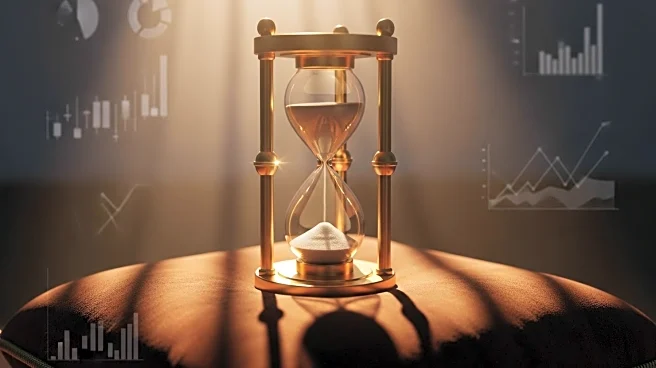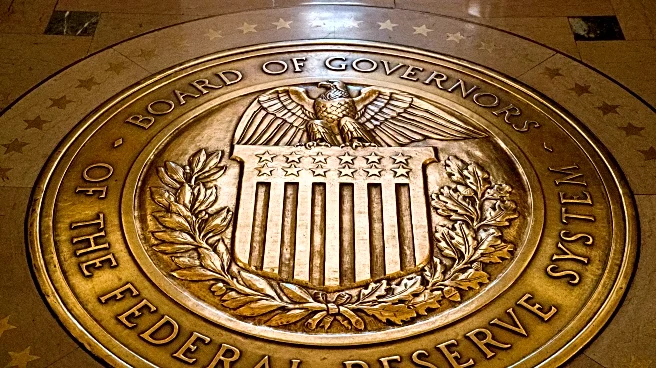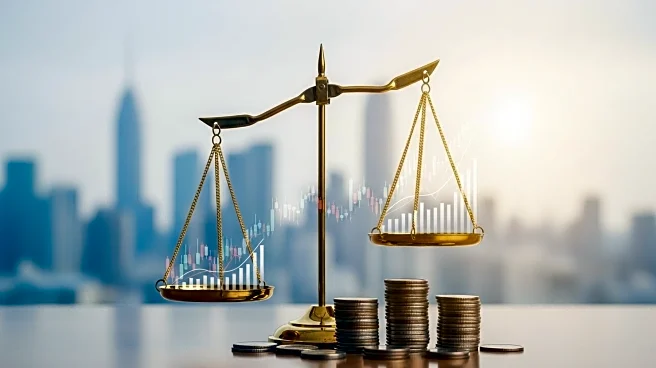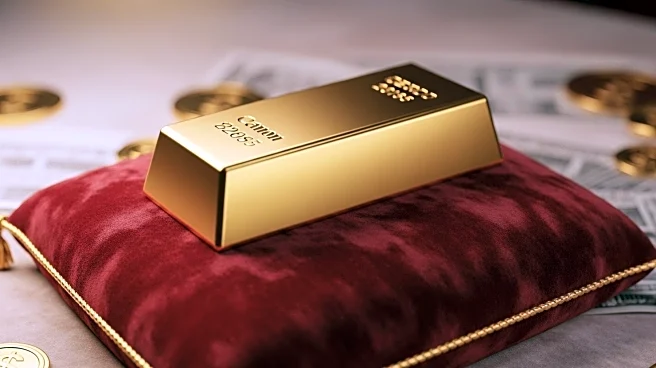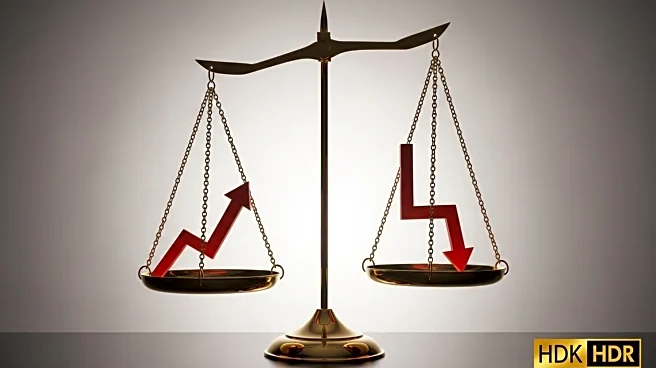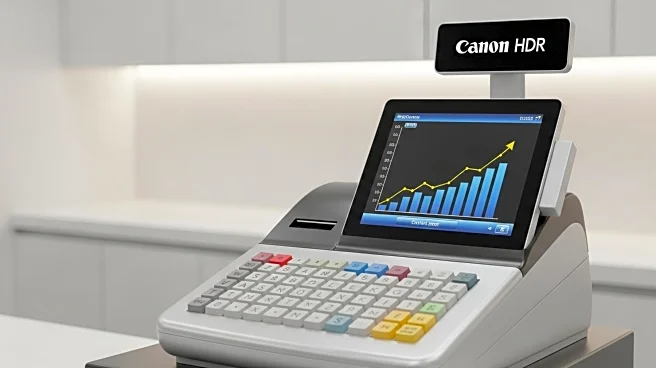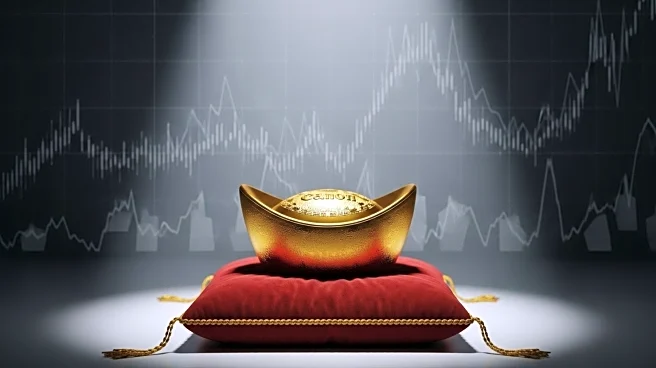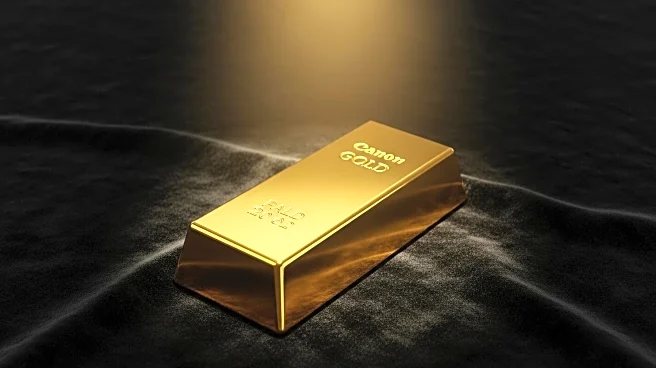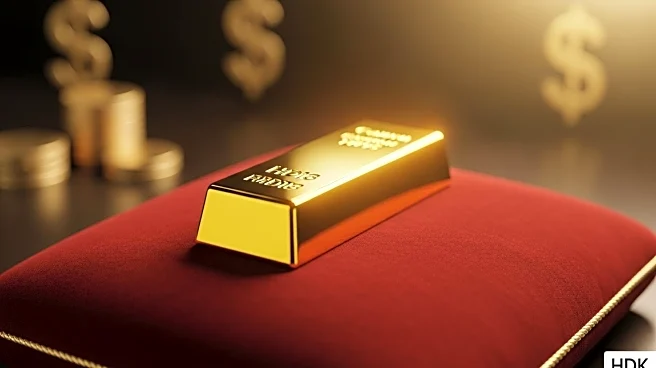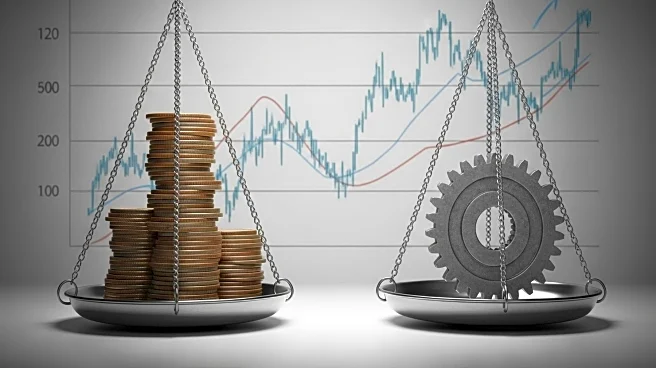What is the story about?
What's Happening?
Gold prices have reached a new all-time high of $3,724.90 per troy ounce, driven by fears of stagflation and expectations of interest rate cuts. The precious metal has risen by 39% year-to-date, outperforming its returns during previous economic crises. The surge in gold prices is attributed to ongoing economic uncertainty, including geopolitical tensions, tariffs, and a shaky labor market. Additionally, inflation remains above the Federal Reserve's target, contributing to the metal's appeal as a safe-haven asset.
Why It's Important?
The rise in gold prices highlights growing concerns about stagflation, a scenario characterized by high inflation, slow economic growth, and high unemployment. This environment is typically favorable for gold, as investors seek to protect their wealth from economic instability. The potential for interest rate cuts by the Federal Reserve further enhances gold's attractiveness, as lower rates reduce the opportunity cost of holding non-yielding assets like gold. The current economic conditions could lead to increased demand for gold, impacting various stakeholders, including investors, central banks, and industries reliant on the metal.
What's Next?
The Federal Reserve's upcoming meeting could result in interest rate cuts, which may further boost gold prices. Investors will be closely watching the Fed's decisions and any signals regarding future monetary policy. Additionally, ongoing economic developments, such as changes in inflation rates and geopolitical tensions, will continue to influence gold's trajectory. Market participants may also consider diversifying their portfolios to hedge against potential economic downturns, with gold playing a central role in such strategies.
AI Generated Content
Do you find this article useful?
